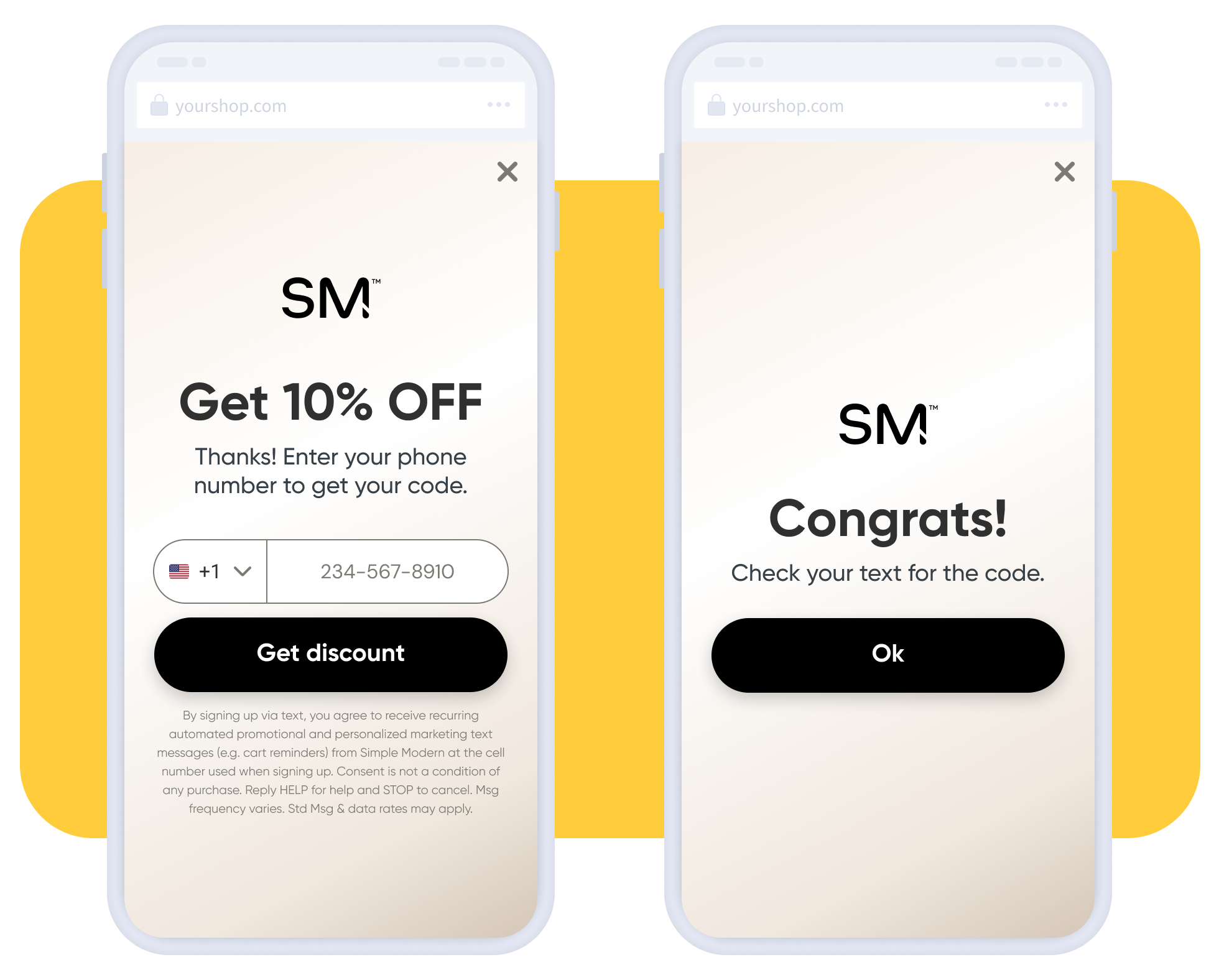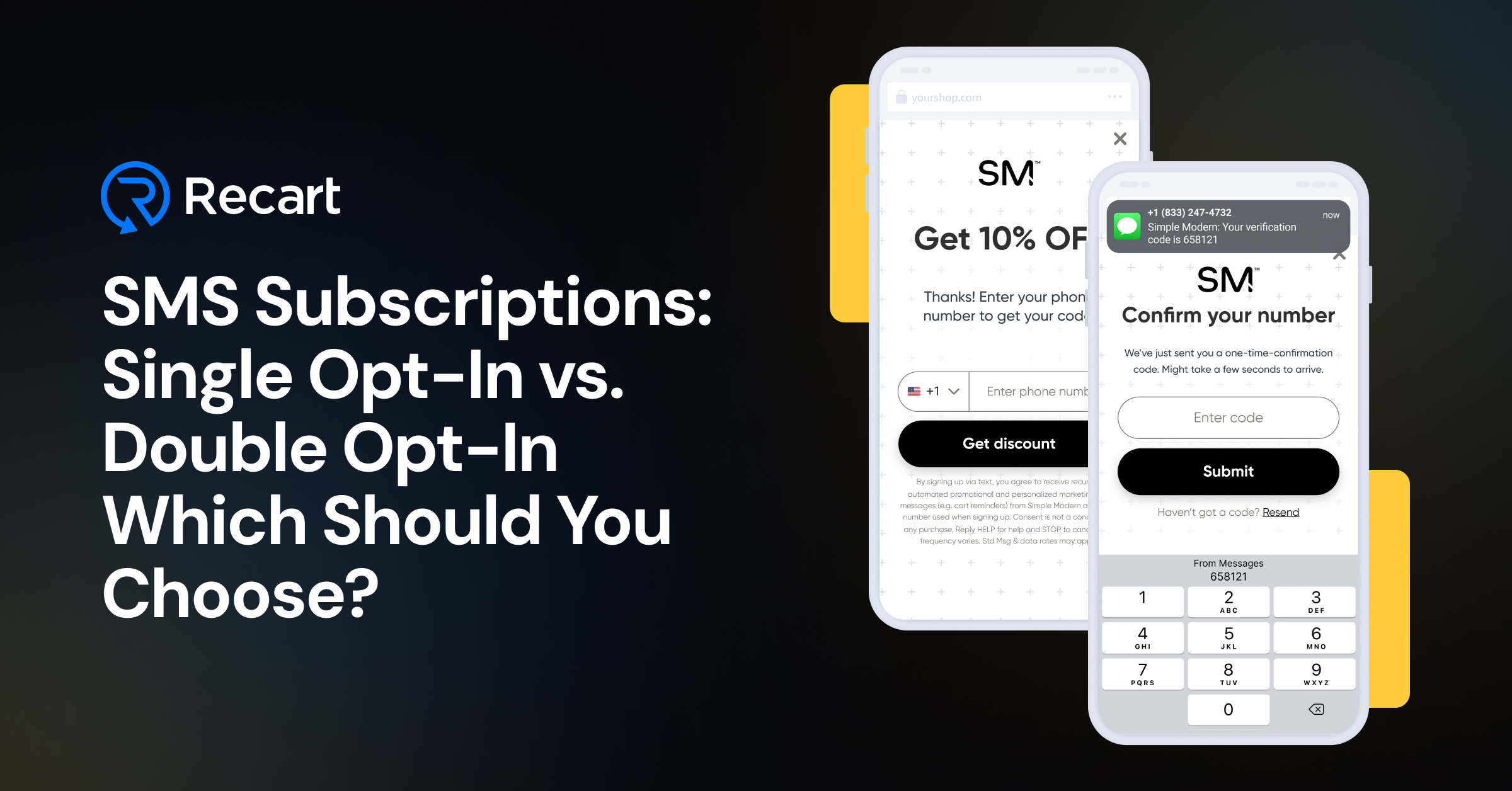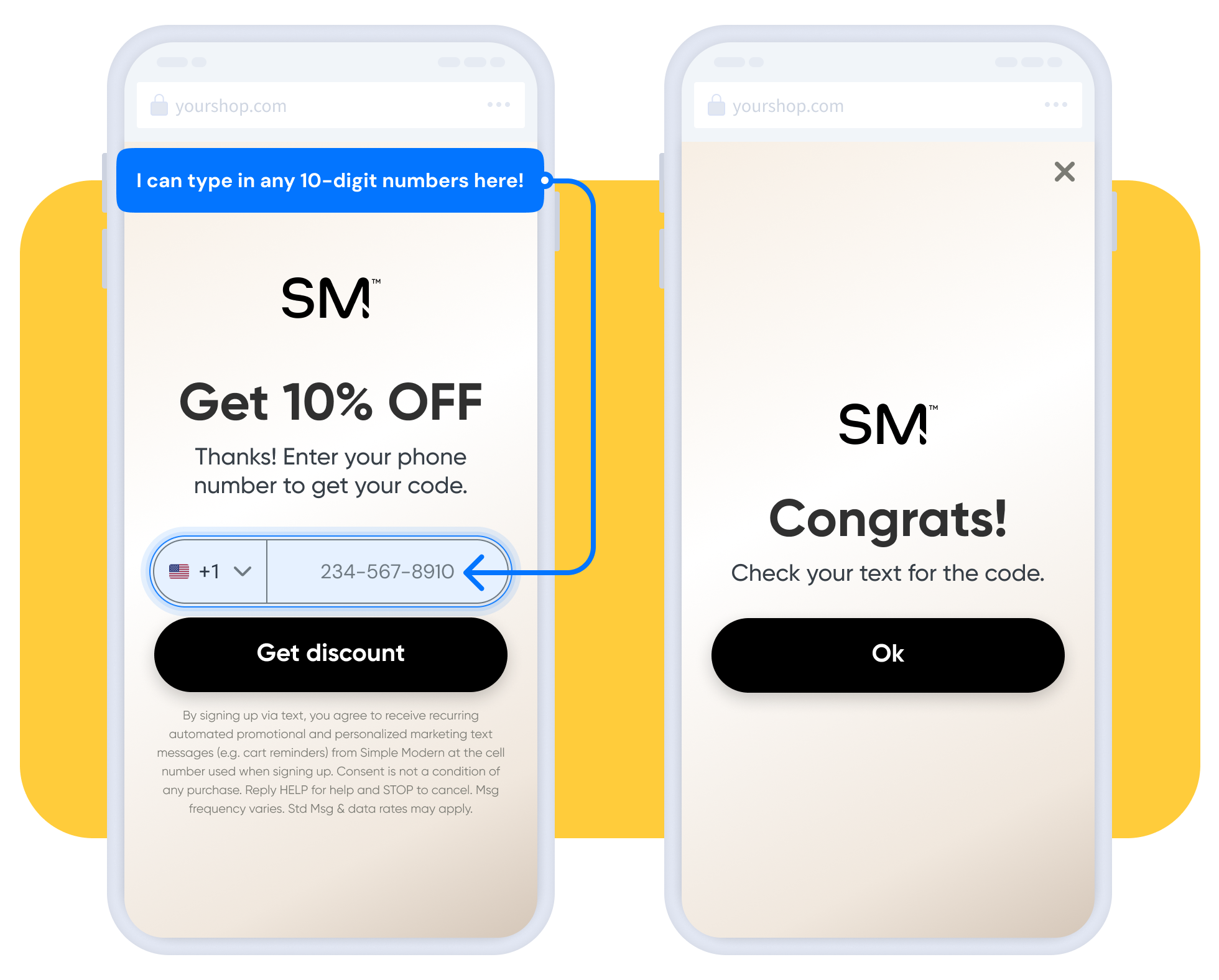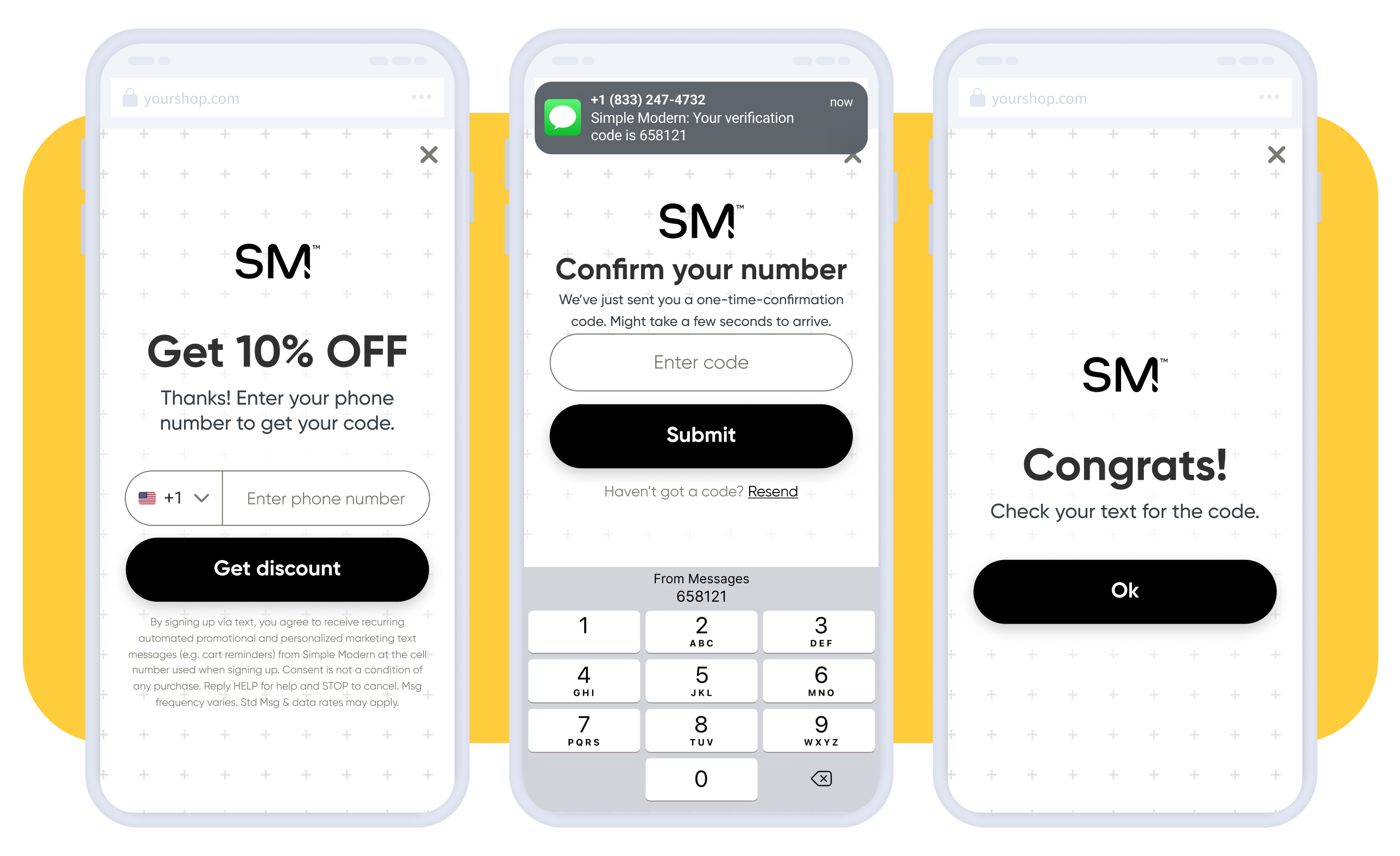If you’re running SMS marketing for your e-commerce brand, one of the first decisions you’ll make is how customers subscribe to your list. While both single and double opt-in methods are compliant with TCPA and CTIA regulations, they carry very different risk profiles. Here’s what you need to know to protect your brand.
What Is Single Opt-In?
Single opt-in is the simpler of the two approaches. A customer enters their phone number into a popup or checkout form, clicks subscribe (or simply proceeds to the next step), and is immediately added to your SMS marketing list.

When done correctly – following all TCPA and CTIA guidelines – this method is perfectly legal and compliant. The appeal to marketers is obvious: there’s virtually no friction. Customers don’t have to take any additional steps, making it feel like the path of least resistance.
But the least friction in SMS comes with a problem.
The Hidden Risk of Single Opt-In
While single opt-in might seem like the optimal choice from a conversion standpoint, it opens your brand up to significant (and unnecessary) litigation risk.
Here’s why: with single opt-in, anyone can enter any phone number into your form. Here’s my worst-case scenario for you (it can sound silly, but it’s fully realistic!):
A bad actor could easily add any phone numbers to your SMS marketing list. Including TCPA litigators’ numbers. You’ll accept it as fully consented, start sending marketing SMS, and suddenly you’re texting someone who has never visited your website and knows nothing about your brand. That’s a lawsuit waiting to happen.
Even though you’ve done nothing wrong from a compliance perspective, you’ve created exposure that most brands simply shouldn’t accept – especially when there’s a better solution.
What Is Double Opt-In?
Double opt-in adds a verification step after the customer submits their phone number. There are three main approaches:
1. Two-Factor Authentication (2FA) with One-Time Passcode (Recommended)
After entering their number, customers receive an OTP that their device automatically pulls in to verify they actually own that phone number. This is the gold standard because it keeps customers on your website throughout the entire process.
2. Confirmation Text Message
Customers receive a text asking them to reply “YES” or “CONFIRM” to complete their subscription. While effective, this method requires customers to leave your site and interact with their messages app, distracting them in the buyer journey.
3. Deep Links
Customers click a button that switches them to their messages app to send a confirmatory text. Like method #2, this pulls people away from your site (into their most distractive app: Messages), which can introduce huge drops in conversion rates.
Why Two-Factor Authentication Wins
The 2FA method is superior for one simple reason: it doesn’t force customers off your website. That’s a massive advantage. You verify ownership of the phone number while maintaining the user experience and flow of your checkout or signup process.
And here’s what it accomplishes:
- Eliminates litigation risk completely by ensuring every subscriber actually owns their phone number
- Creates a highly clean SMS list with zero fake or malicious entries
- Introduces minimal friction – typically just a 2-8% drop-off in OTP conversion
The Bottom Line: Use Double Opt-in
Both single and double opt-in are compliant. But compliance isn’t the same as smart risk management.
Single opt-in introduces a calculated risk that most brands shouldn’t take, especially when double opt-in with 2FA solves the problem entirely while adding negligible friction. You get peace of mind, a cleaner list, and protection from unnecessary litigation—all while maintaining strong conversion rates.
For all Recart brands, we strongly recommend using double opt-in with two-factor authentication. It’s simply the safer, smarter way to build your SMS marketing program.





